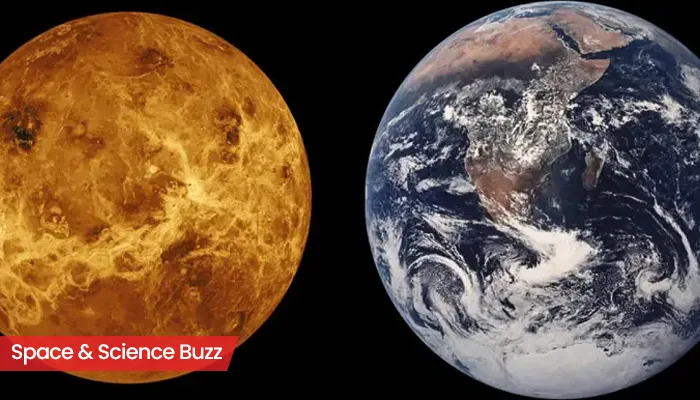
Here are today’s most important updates from the realm of Science and Space.
Earth Hits Boiling Point: 2024 Sets New Record for Global Temperatures
2024 has officially been recorded as the hottest year in history, with a global average temperature of 15.10°C, according to the Copernicus Climate Change Service (C3S). This surpasses the previous record set in 2023 by 0.12°C. This year also marked a significant milestone, with global temperatures reaching 1.60°C above pre-industrial levels, exceeding the critical 1.5°C limit for the first time in a calendar year. Greenhouse gas concentrations also reached unprecedented levels in 2024, with carbon dioxide averaging 422 ppm (parts per million) and methane at 1897 ppb (parts per billion).
Mercury in Focus: Jaw-Dropping Images Captured by ESA Mission
Our top three images from the sixth Mercury flyby are here! 🌗
— BepiColombo (@BepiColombo) January 9, 2025
See what they reveal about the mysterious planet here 👉 https://t.co/osfrjGs2t5 and in 🧵👇 pic.twitter.com/b8uU2h4RL0
(Credit - X/@BepiColombo)
Stunning detailed images of Mercury have been clicked by BepiColombo as it made its sixth and final flyby ahead of entering the planet's orbit in 2026. Barely larger than our own Moon, Mercury orbits precariously close to the Sun at an average distance of roughly 58 million kilometres. During its stay in the Mercury orbit, BepiColombo will uncover why the planet only has a thin veneer of rocks despite its oversized iron core, which represents 60 per cent of its mass. Another major aim of this mission is to find out the presence of water in this planet.
Breakthrough Tech: India Leads in Nanoscale Light Manipulation
A new cutting-edge platform for controlling light at the nanoscale, paves the way for advancements in quantum communication, data encryption, and next-generation photonic devices
— PIB India (@PIB_India) January 10, 2025
Highly efficient and spectrally pure single photon sources are desirable in fundamental studies of… pic.twitter.com/rV9gAL9KKn
(Credit - X/@PIB_India)
Scientists at the Indian Institute of Science (IISc), Bangalore, have made a significant breakthrough in controlling light on a tiny scale. The work involves combining special light-emitting materials called colloidal quantum wells (CQWs) with tiny structures known as dielectric metasurface resonators (MSRs). The breakthrough allows light to travel long distances—up to 1 millimetre—on a single chip, showing promise for compact and efficient quantum devices. The emitted light has 12 times higher brightness which reduces the spectral width of emitted light by 97%, ensuring that the light is more focused and pure. This advancement is crucial for quantum cryptography, which ensures secure communication, and for quantum information processing.
India's Wildlife Treasure Expands: New Pangolin Species Found
#FloraAndFauna
— MyGov Arunachal Pradesh (@MyGovArunachal) January 10, 2025
Arunachal Pradesh's rich biodiversity continues to astound us with the discovery of the Indo-Burmese pangolin, a newly identified species found in our state. This highlights Arunachal's vital role in global conservation efforts. pic.twitter.com/1u9KBCytmM
(Credit - X/@MyGovArunachal)
Scientists from the Zoological Survey of India (ZSI) have made an exciting discovery by identifying a new species of pangolin, named the Indo-Burmese pangolin (Manis indo-burmanica) utilising advanced genomic tools. This species diverged from the Chinese pangolin (Manis pentadactyla) approximately 3.4 million years ago, shedding light on the evolutionary diversity of pangolins in the region. The species is primarily found in Arunachal Pradesh and Assam, with potential ranges extending into Nepal, Bhutan, and Myanmar. As pangolins face increasing threats globally, understanding their evolutionary history becomes crucial for ensuring their survival.



.webp)
.WEBP)
.WEBP)
.webp)
.webp)


.webp)
.webp)
.webp)